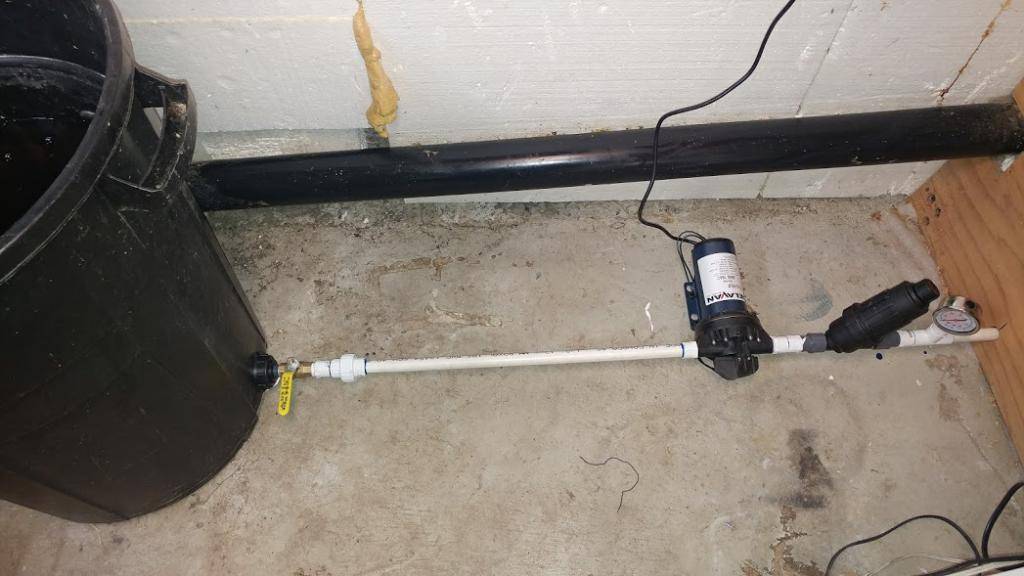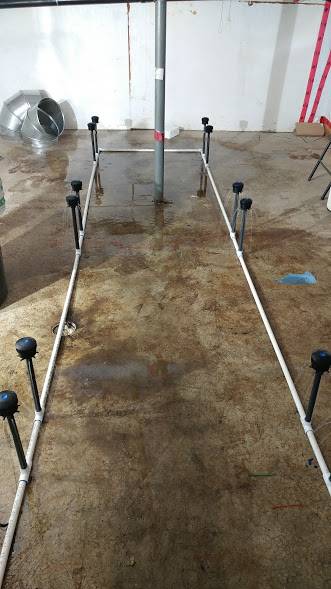sheik_yerbouti
Member
So I've been beating my head against the wall here for the last while trying to stop this constant drip I have here on my first automatic watering irrigation setup.
I'm using 8 port pepco octabubblers with 1/4" drip lines coming off and open on the end. I've taken the rubber gasket out of the bubblers for more even flow as I wasn't getting even distribution to each site. But basically I'm having a hell of a time getting some of the line to stop a constant dripping after each watering. It looks to be the sites that are the lowest in the room as I'm in a basement that has an unlevel slab poured. This is my original set up

Rez, pump, filter, pressure gauge. Pretty simple. Goes into the room

48 sites with 2 lines per site. The bottom right plants are usually the ones dripping.
I thought it was a siphoning problem at first so I altered the setup.

Added a return line to rez (this actually was to keep the pump from cycling on and off as it was reaching its internal pressure switch limit but also figured it would stop siphoning). And added a check valve to hopefully stop the siphoning as well.
Well it didn't stop the drip so I figured it was the water pressure from the tank cause the drip so I changed it up again to this.

So still getting a constant drip. I found that I can stop the drip by lifting the dripping emitter up an inch but that just forces a drip out of another spot. I tried raising the culprit bubbler up in elevation but that doesn't stop it. It's basically dripping out of the few lowest emitters. If I take one out and put if floor level it starts to pour out and stops the dripping from all the others.
So ya, obviously its an elevation thing but is there a way to combat this without trying to get every plant and emitter exactly level to each other?
Hope this makes sense and hope someone can help! Loosing more hair than I need to over this.
Room is looking good either way. Just gotta get this drip thing dialed.

I'm using 8 port pepco octabubblers with 1/4" drip lines coming off and open on the end. I've taken the rubber gasket out of the bubblers for more even flow as I wasn't getting even distribution to each site. But basically I'm having a hell of a time getting some of the line to stop a constant dripping after each watering. It looks to be the sites that are the lowest in the room as I'm in a basement that has an unlevel slab poured. This is my original set up
Rez, pump, filter, pressure gauge. Pretty simple. Goes into the room
48 sites with 2 lines per site. The bottom right plants are usually the ones dripping.
I thought it was a siphoning problem at first so I altered the setup.
Added a return line to rez (this actually was to keep the pump from cycling on and off as it was reaching its internal pressure switch limit but also figured it would stop siphoning). And added a check valve to hopefully stop the siphoning as well.
Well it didn't stop the drip so I figured it was the water pressure from the tank cause the drip so I changed it up again to this.
So still getting a constant drip. I found that I can stop the drip by lifting the dripping emitter up an inch but that just forces a drip out of another spot. I tried raising the culprit bubbler up in elevation but that doesn't stop it. It's basically dripping out of the few lowest emitters. If I take one out and put if floor level it starts to pour out and stops the dripping from all the others.
So ya, obviously its an elevation thing but is there a way to combat this without trying to get every plant and emitter exactly level to each other?
Hope this makes sense and hope someone can help! Loosing more hair than I need to over this.
Room is looking good either way. Just gotta get this drip thing dialed.


